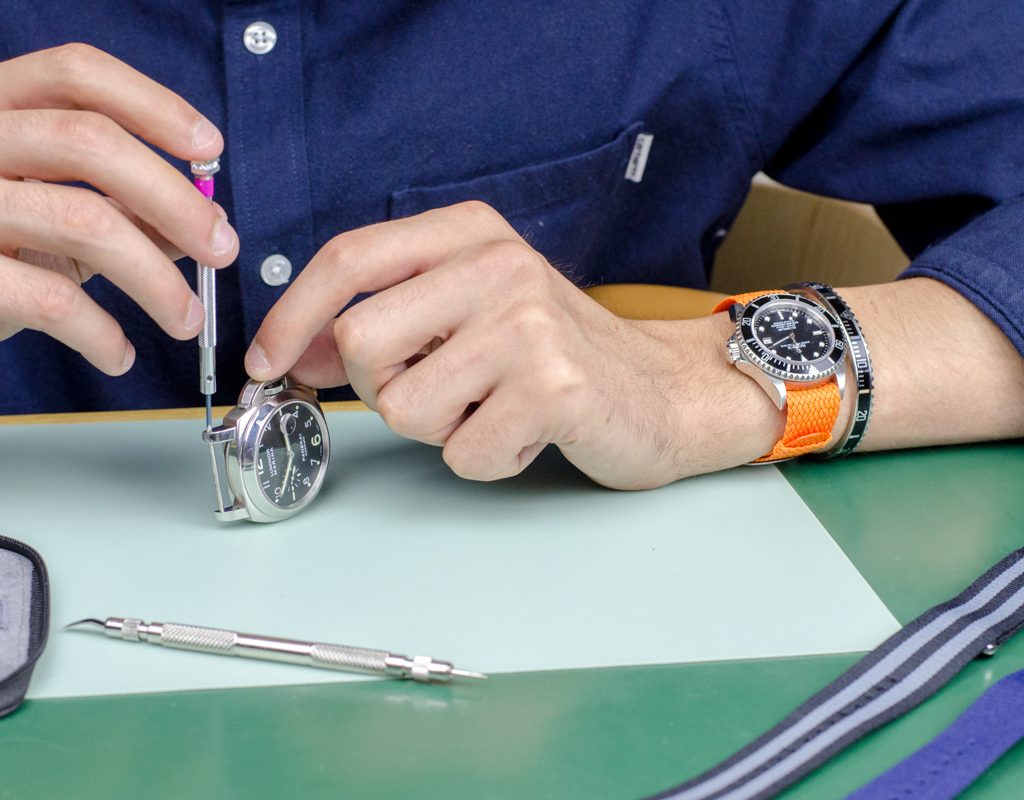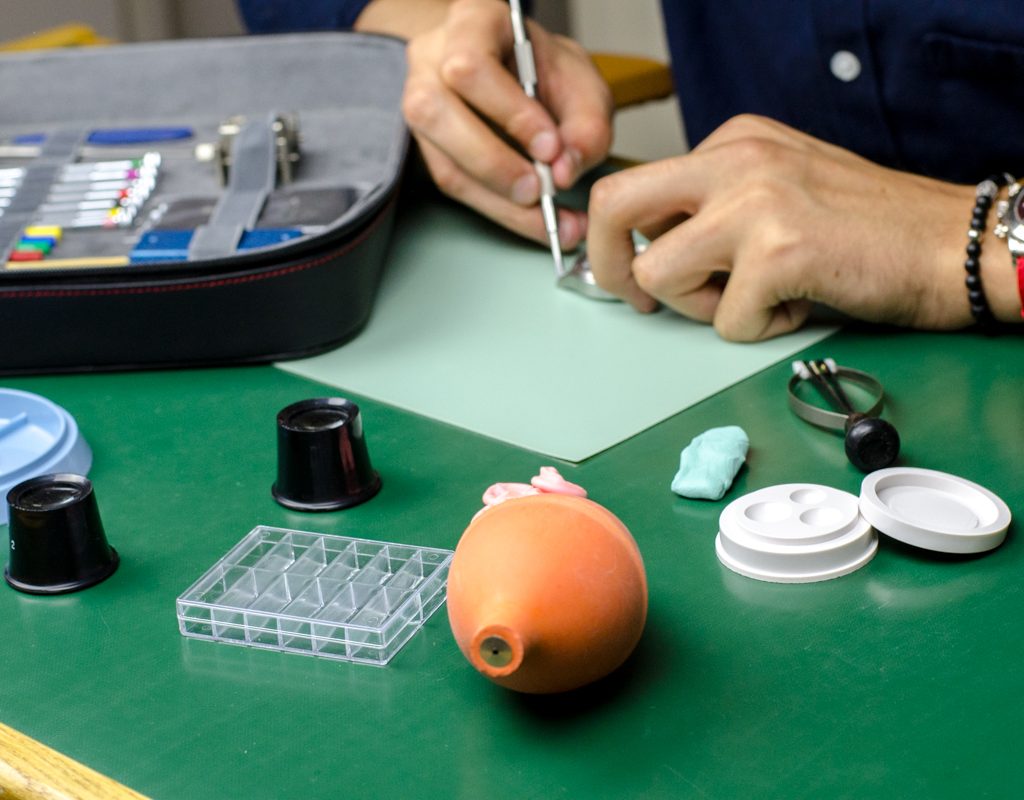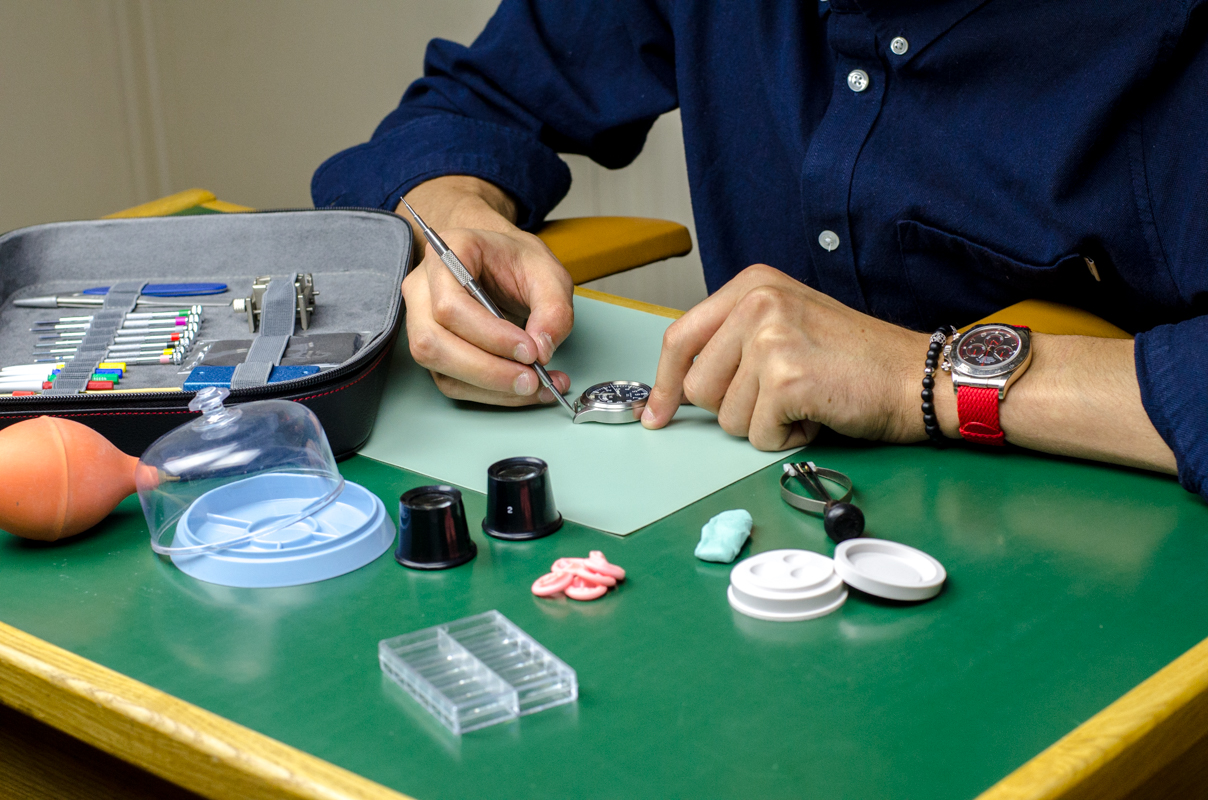Does changing a watchband yourself seem impossible? We understand, with its recalcitrant lugs and mysterious tools, the operation may seem reserved for the pros. But we’re going to prove you wrong, as we break down the simple methods for replacing a leather, mesh, fabric or NATO strap, without scratching your watch or losing your nerves. Personalize your style, adapt your watch to a chic outfit – it’s all within your reach! Whether you’re just starting out or not, our complete guide will show you the key steps. Ready to give your timepiece a facelift in just a few simple steps? Let’s get started!
Changing your watch strap: a new life for your timepiece

You’ve got a watch you love, but its strap is starting to show signs of fatigue? Changing a watch strap is an ingenious idea for giving your favorite accessory a facelift, without breaking the bank. While some people are reluctant to tackle this task, it’s actually an operation that’s accessible to everyone, provided they’re well prepared. With the right tools and the right steps, you can transform your watch in just a few minutes.
Whether you want to follow a trend, adapt your watch to an occasion or simply rediscover a watch you thought was outdated, personalization offers infinite possibilities. A leather strap for an elegant look, a NATO for retro style, or a silicone model for summer? It’s all possible. And the good news is that it’s not mission impossible. It‘ s quick and easy, and requires just a little attention. Follow our guide to become a watch strap expert!
Preparation: what you need to know before taking the plunge
The tools of the perfect small watchmaker
For changing your wristband, the pump-plunger is the essential tool. Equipped with a fork and a point, it removes the spring-loaded lugs without damaging the case. Avoid improvised tools, which are too risky. A soft cloth protects your watch from scratches. For metal bracelets, use a precise screwdriver (1.6 to 1.8 mm) to adjust screwed links.
- Pump removal device: for safe removal of the pump bar.
- Soft cloth: to protect your watch during operation.
- New bracelet: check that it matches the lugs.
- Precision screwdriver: useful for certain metal bracelets.
Measuring the dewlap: the step never to be skipped
The lugspace is the distance between the lugs of the case, expressed in mm. Measure it with a ruler after removing the old strap. Common sizes are 18 mm (vintage), 20 mm (standard) and 22 mm (sporty). An accurate measurement guarantees a perfect fit and avoids purchasing errors. A 40 mm watch with a 50 mm lugs will look larger than a similar watch with a 44 mm lugs. Always remove the existing strap for an accurate measurement.
The tutorial: changing a classic spring bar bracelet
Changing a spring-loaded bracelet is a simple operation that can be carried out by yourself, using a pump plunger. It allows you to renew the look of your watch on a regular basis, without having to call in a professional. Here are the key steps for a successful installation in complete confidence.
Step 1: Removing the old bracelet
Place the watch face down on a soft cloth to avoid scratching the lugs. Insert the plunger fork between the bracelet and the horn, then point it towards the shoulder of the bar. Apply gentle inward and downward pressure to dislodge it. Repeat on the other side. The secret? A smooth, fluid movement: any precipitation could damage the watch.
If your lugs are drilled (hole visible on the outside), use the tip of the pump plunger to push the clip through the hole. For fat springbars (e.g. Rolex, Seiko), dislodge the bar on both sides before extracting it. This avoids bending the thicker endpieces.
Step 2: installing the new wristband
Insert the spring bars into the notches on the new bracelet. Position one end in the horn hole, then compress the other side with the plunger fork. Align and release: a click confirms locking. The watchword? Adjust without forcing, to avoid damaging components.
Check that each strand is securely attached by pulling lightly on it. If it resists, it’s firmly attached. For perfect compatibility, measure the width between the horns with a caliper. All you need is a suitable tool and a rigorous method. Congratulations: in just a few minutes, your watch has a new look. Who’d have thought?
Other fastening systems: to suit every watch
Quick-release bracelets
Simplicity incarnate. This modern, practical system lets you change bracelets in the blink of an eye. A small pin integrated into the bracelet simply needs to be pulled with the fingernail to release the clip. Installation is intuitive: just slide on the new bracelet with your eyes closed. Ideal for personalizing your watch without delicate handling.
NATO or Perlon bracelets
Tool-free changeover. These one-piece bracelets eliminate the need to remove spring bars after installation. Simply slide on the old model and intertwine the new one between the lugs and the case back. A safe method to limit the risk of losing metal parts. Practical for renewing your style in seconds.
Bracelets with screw fasteners
The screwdriver method. Some luxury watches use screws rather than bars. The essential tool is the appropriate watchmaker’s screwdriver. Unscrew the fasteners, change the strap, then carefully retighten. Although slower than modern systems, this method ensures optimum solidity for certain high-end watches.
Beyond change: choosing the right bracelet and alternatives

Which strap for my watch?
Each material is adapted to a specific use and style. Here’s an overview of available options:
- Leather: Elegant and classic, water-sensitive.
- Steel / Milanese knit: Robust and versatile, from sporty to dressy.
- Silicone / Rubber: Comfortable and resistant, ideal for sports and diving.
- Fabric (NATO): Casual, colorful and easy to interchange.
To guide you, discover our complete guide on choosing a bracelet according to your style and needs.
What if I don’t dare? the professional option
If the idea of handling a valuable watch worries you, a jeweler or watchmaker can intervene for a modest fee (around 30€ for installation, sometimes free with the purchase of the bracelet). Although this is not the solution for DIY enthusiasts, it does guarantee risk-free assembly, especially for models requiring specific bars (additional 5€). A practical option for enjoying your watch with complete peace of mind.
Our latest tips for a successful operation
Take your time and work on a soft surface (microfiber cloth) to avoid scratches. Never force: if a component resists, check the fastening system. Simple carelessness can cause damage, especially to fragile materials.
After installation, check that it is securely in place by pulling slightly on either side. The pumps should engage properly: an audible click confirms that they are correctly seated. A loose watch can slip off. Use caution.
You’ve now mastered the basics of strap changing! With patience and the right tools, your watch can be easily transformed. Now it’s up to you!
Changing your watch strap is quick and easy, and will give your watch a new lease of life. Whether you’re looking for a bold personalization or a seasonal adaptation, the right steps make the operation easy. Always check the fastening: safety first! Ready to rediscover your watch in a new light? Then get started!

